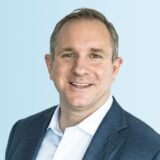Are you ready for the new earnings mandate?
Among the higher education policies enacted in the One Big Beautiful Bill (OBBB) is a provision that ties a college program’s eligibility for federal student loans to the earnings of its graduates. Far from a radical shift, this measure represents the latest step in more than a decade of bipartisan efforts, dating back to the Obama administration and the launch of the College Scorecard.
For now, the rules remain relatively lenient. Most programs easily clear OBBB’s threshold, which requires that graduates’ median earnings exceed the median earnings of graduates with the prior degree level (a high school diploma for associate and bachelor’s programs, or a relevant bachelor’s degree for graduate programs).
It could have been far tougher. Last-minute Senate changes spared colleges from a stricter standard that would have included all former students in the calculation, including non-completers who would have sharply reduced median earnings. This would have put tens of thousands of programs at risk of losing eligibility for federal student loans.
Given the direction of policy and public opinion, it seems likely that future regulations will more closely resemble the tougher version of the OBBB than the one that was ultimately signed into law. In this light, the current framework serves as a grace period, giving borderline programs time to strengthen operations and outcomes. Now is the time for institutions to prepare for that future.
Three core threats to median earnings
It is often assumed that graduate earnings are determined solely by field of study. While it is true that technical and high-demand disciplines such as engineering, computer science, and health professions generally yield higher early-career salaries than many liberal arts fields, these differences only tell part of the story.
Three other factors—non-completion, underemployment, and unemployment—can exert an even greater influence on median earnings. Many institutions have the potential to see rapid gains in the earnings of former students by focusing on one or more of these three problems:
- Non-completion: Students who leave without a credential earn wages only marginally higher than high school graduates, dragging down median earnings.
- Underemployment: Graduates working in jobs that do not require a college degree earn well below the expected wage premium for their credential.
- Unemployment: Recent graduates that cannot find or hold on to steady employment have zero earnings, lowering the median for their program
This means the fastest and most direct path to improving near-term outcomes lies not in reshaping the curriculum, a complex process that takes years, but in addressing gaps in completion and employment among current students and recent alumni.
Strategies for improving median earnings
The most effective response to earnings accountability is a set of interventions that can be deployed now, focusing on the current and former students who will influence the next few years of earnings measurement. There are four strategies you can try. Consider your unique mission, geographic region, and student population when deciding which of these strategies to adopt and which to prioritize.
1. Career placement
Helping students secure strong first jobs has become one of the most direct levers institutions can pull to influence earnings outcomes. By providing intensive, concierge-style career services, institutions can flag students nearing graduation who lack a concrete career plan, connect them with alumni or employer networks, and track post-graduation outcomes. These services can be extended to re-engage underemployed alumni. Career placement is especially critical for graduating international students seeking employment to support visa status.
Career placement represents the fastest way to boost institutional performance under any accountability system. By ensuring that more students transition smoothly into well-paying roles, colleges not only strengthen their own standing but also deliver immediate, tangible benefits to students regardless of their discipline.
2. Stop-Out reenrollment
Every year, millions of students leave college without a credential, despite being within reach of completion. Institutions can make meaningful gains by identifying former students who are close to finishing, especially those who stopped out within the last three years, and streamlining their pathways back to enrollment. This work often involves simplifying admissions and administrative processes, providing flexible formats, clearing financial balances and providing incentives, and offering concierge-style advising to guide students to completion. Platforms like Navigate360 support this work by helping institutions identify near-completers, remove barriers to reenrollment, and keep returning students on track through coordinated care and targeted campaigns.
The “some college, no credential” population now includes nearly 39 million Americans, with two million more joining annually. Helping even a fraction of these students return and finish their degrees can significantly raise institutional earnings metrics while also improving life outcomes for individuals who already invested heavily in higher education.
3. Reverse transfer
Many students who leave midway through a bachelor’s program have earned several terms’ worth of credits but get little labor-market value from them. By retroactively awarding associate degrees to eligible students, typically those who have completed at least 60 credits and enough general education requirements, colleges can transform partial progress into a recognized credential. Pairing degree conferral with career counseling or reenrollment options further enhances the impact of reengaging these students.
Reverse transfer can create immediate value for many non-completers. Providing these students with a recognized credential can open new career opportunities that boost their earnings and create an on-ramp to completing a bachelor’s degree.
4. Transition advising for transfers and graduate education
Students have special advising and planning needs if they plan to transfer from an associate program to a bachelor’s program or continue to graduate school. Institutions can smooth these transitions by partnering with neighboring institutions to develop joint advising programs, coordinating registrar and aid offices, and establishing data-sharing practices to track progress. Transition advising ensures that students are not only admitted but also positioned to succeed as they pursue further credentials.
Under systems like the OBBB, institutions benefit when their graduates pursue additional study that adds a further earnings boost. Meanwhile, students are exempted from the institutional median earnings calculations while they are enrolled in their new program.
What should colleges do now?
Earnings data are an imperfect proxy for the full value of higher education, but under the OBBB they are now a central test of minimum financial ROI. The current framework is relatively forgiving but foretells stricter measures in the future. Leaders should take advantage of this grace period to improve outcomes before accountability tightens.
Fortunately, colleges do not need to overhaul curricula to make near-term progress. The four strategies outlined here—career placement, stop-out reenrollment, reverse transfer, and transition advising—can raise median earnings while delivering tangible benefits to students. Acting now carries little downside and positions institutions ahead of potential tightening in accountability rules. At worst, you will graduate more students, help them secure better lives after college, and make important enhancements to your student success strategy.

More Blogs

Four signs it’s time to break up with your student CRM

Three lessons from 1,200 student success leaders on higher ed’s future
